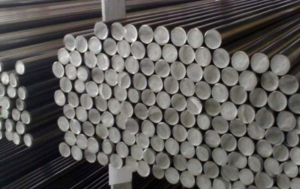Hastelloy B3 and C22 occupy a significant position in the realm of high-performance alloys due to their exceptional resistance to corrosion and their ability to retain strength in harsh environments. Both alloys are nickel-based and are widely used in chemical processing, pollution control, and other demanding applications. However, despite their similarities, there are crucial differences that distinguish Hastelloy B3 from Hastelloy C22.

What is the difference between Hastelloy B3 and C22?
Compositional Differences
Hastelloy B3 is a nickel-molybdenum alloy with a nominal composition of 65% nickel, 28% molybdenum, and 4% cobalt. It also contains trace elements of silicon, manganese, iron, carbon, and phosphorus. This composition provides excellent resistance to reducing acids, such as hydrochloric acid and sulfuric acid, making it suitable for applications involving concentrated acids.
Hastelloy C22, on the other hand, is a nickel-chromium-molybdenum alloy with a higher chromium content. Its nominal composition includes 57% nickel, 16% chromium, 16% molybdenum, and 5% tungsten. The addition of chromium and tungsten enhances its resistance to oxidizing media and gives it exceptional corrosion resistance in a wider range of environments.
Corrosion Resistance
Both Hastelloy B3 and C22 exhibit excellent corrosion resistance, but they have distinct performance characteristics. Hastelloy B3 is particularly suited for applications involving reducing acids and brine solutions, owing to its high molybdenum content. It also demonstrates good resistance to crevice corrosion and stress corrosion cracking.
Hastelloy C22, on the other hand, offers enhanced resistance to oxidizing acids, such as nitric acid and mixed acids. Its chromium content provides resistance to oxidizing media, while the molybdenum and tungsten additions further enhance its corrosion resistance. Additionally, Hastelloy C22 exhibits exceptional resistance to pitting and crevice corrosion in chloride-containing environments.
Mechanical Properties
The mechanical properties of Hastelloy B3 and C22 also differ slightly. Hastelloy B3 typically has a lower yield strength and tensile strength compared to Hastelloy C22. However, it exhibits good ductility and toughness, which allows it to withstand impact and vibration in demanding applications.
Hastelloy C22, on the other hand, has a higher yield strength and tensile strength, making it suitable for applications requiring higher structural integrity. It also demonstrates good ductility and toughness, but its primary advantage lies in its superior corrosion resistance.
Fabrication and Weldability
Both Hastelloy B3 and C22 are relatively easy to fabricate using conventional methods, such as hot rolling, cold working, and forging. However, Hastelloy C22 tends to be more challenging to machine due to its higher hardness.
In terms of weldability, both alloys can be welded using conventional welding techniques, such as gas tungsten arc welding (GTAW) and gas metal arc welding (GMAW). However, proper welding procedures and post-weld heat treatment are crucial to ensure the integrity of the weldments and maintain the corrosion resistance of the alloys.
Applications
The choice between Hastelloy B3 and C22 often depends on the specific requirements of the application. Hastelloy B3 is commonly used in chemical processing equipment, pollution control systems, and brine handling systems due to its excellent resistance to reducing acids.
Hastelloy C22, on the other hand, is often preferred for applications involving oxidizing acids, such as nitric acid production and pickling operations. It is also widely used in pulp and paper production, pharmaceutical manufacturing, and other industries where corrosion resistance in a wide range of environments is critical.
Conclusion
In summary, Hastelloy B3 and C22 are both excellent high-performance alloys with exceptional corrosion resistance. However, their compositional differences lead to distinct performance characteristics that make them suitable for different applications. Hastelloy B3 is best suited for applications involving reducing acids, while Hastelloy C22 offers enhanced resistance to oxidizing acids and mixed environments.
Thank you for reading our article and we hope it can help you to have a better understanding of the differences between Hastelloy B3 and C22. If you are looking for Hastelloy B3 and C22 suppliers and manufacturers online now, we would advise you to visit Huaxiao Alloy.
As a leading supplier of Hastelloy B3 and C22 from Shanghai China, Haxiao Alloy offers customers high-quality Hastelloy B3 and C22 products at a very competitive price.




 Arabic
Arabic Chinese (Simplified)
Chinese (Simplified) Chinese (Traditional)
Chinese (Traditional) Dutch
Dutch English
English French
French German
German Italian
Italian Japanese
Japanese Korean
Korean Malayalam
Malayalam Mongolian
Mongolian Norwegian
Norwegian Portuguese
Portuguese Russian
Russian Serbian
Serbian Spanish
Spanish Swedish
Swedish Thai
Thai Turkish
Turkish